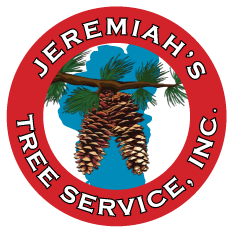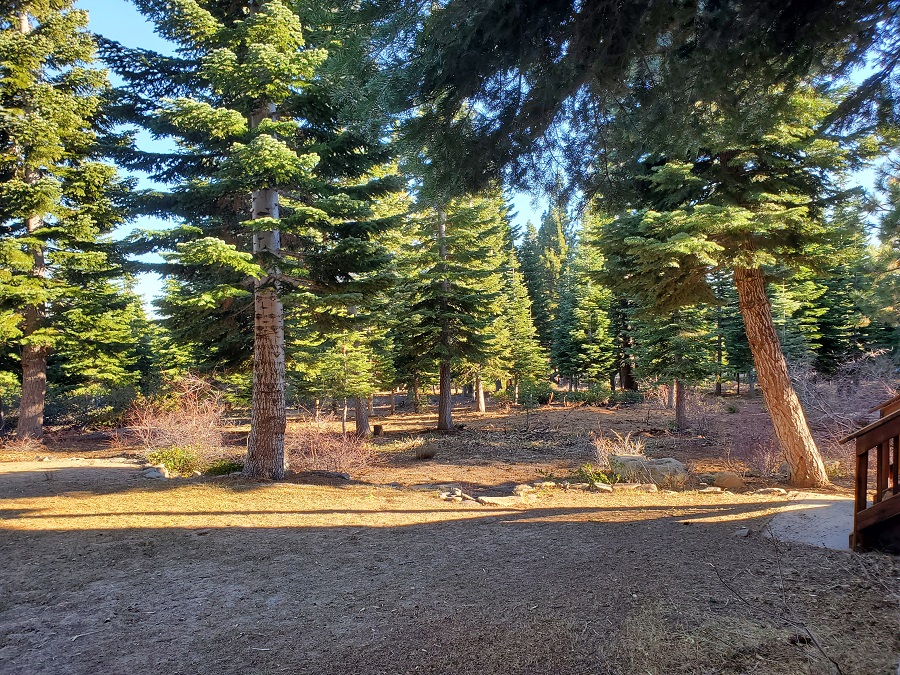If you’ve noticed a sticky, shiny residue coating your car, patio furniture, or lawn, you’re not alone. Bird poop is another common nuisance that can occur when a car is parked under a tree, potentially causing damage to the vehicle’s paint if not addressed promptly.
During warm weather in Lake Tahoe, many residents find their outdoor spaces suddenly dotted with this hard-to-clean mess. While it may seem like a problem with the trees themselves, the real culprit is usually much smaller—aphids.
At Jeremiah’s Tree Service, we’ve helped homeowners and property managers across Tahoe deal with this frustrating issue for decades. Here’s what you need to know about the sap-like substance, how to clean it, and—most importantly—how to prevent it.
What Is That Sticky Stuff?
That glossy film isn’t actually tree sap—it’s honeydew, a sugary secretion produced by aphids and other sap-feeding insects like scale and whiteflies. Aphids feed by tapping into a tree’s vascular system and extracting sap. Because they take in more sugar than they need, they excrete the excess, which drips onto everything below.
You might notice:
- A sticky film on your windshield or car’s paint
- Patio furniture that feels tacky from tree sap
- A shiny lawn or walkway under trees
- Black sooty mold developing on top of the tree sap
It is important to remove pine sap promptly to prevent it from hardening into sap, which can cause significant damage to vehicle paint if left untreated. For particularly stubborn or neglected hardened sap, visiting professional auto paint shops is recommended for effective removal.
This is more than just a messy nuisance. Over time, honeydew can attract ants, promote mold growth, and stress your trees.
Problems Caused By Aphids
Car Paint Chips
Aphids excrete a sticky substance called honeydew, which can drip from infested trees onto parked vehicles and windows. Over time, this sap can damage a car’s clear coat, leading to discoloration or even paint chipping if not cleaned promptly.
Seeking professional help at a car shop can effectively clean the sap and restore the car’s body without compromising the paint.
Sap Spots on Patio Furniture
Aphid honeydew also lands on outdoor furniture, leaving behind sticky, shiny spots and sap stains. These can attract dirt, mold, and ants, making surfaces unpleasant to use and difficult to clean.
You may consider using a clean cloth, hot water, baking soda, or alcohol to gently rub and remove the wax-like substance.
Black Sooty Mold
The sugary honeydew creates an ideal environment for a fungus called sooty mold to grow. This mold appears as a dark film on leaves, branches, driveways, patios, and siding—blocking sunlight from leaves and creating an unsightly mess on property.
Stunted Plant Growth
As aphids feed on plant sap, they deprive the plant of vital nutrients. This can lead to curled, yellowing leaves, reduced flowering, and slower growth overall.
Attraction of Ants
Ants are drawn to the tree sap and will often “farm” aphids for a steady supply. In return, they protect aphid colonies from natural predators, worsening infestations and leading to even more tree sap mess.
Common Trees Affected by Aphids in Lake Tahoe
While aphids can attack a variety of plants, here in Lake Tahoe, we frequently see tree sap problems on:
- Aspens
- Willows
- Maples
- Birch trees
- Conifers like fir and spruce (certain aphid species target evergreens)
Even healthy trees can attract aphids—especially during dry or drought conditions, when trees become more vulnerable to infestations.
How to Clean Tree Sap (Honeydew) Off Surfaces
Removing tree sap isn’t always easy, especially if it’s been sitting for a while. Here are a few tips to remove tree sap:
For Cars:
- Wash promptly with warm, soapy water.
- Use a tar remover, sap remover or diluted rubbing alcohol on tougher spots.
- Rinse affected areas thoroughly and apply wax to protect the paint.
- Scrub with a microfiber cloth to polish the car.
For Patios & Furniture:
- Use soap, warm water and a sponge on the affected areas.
- For moldy spots, a good coat of mild bleach solution (test first!) can help.
- A pressure wash may be effective, but be gentle on wood or delicate surfaces.
For Lawns:
- There’s not much you can do except wait for it to break down naturally.
- If you’re seeing mold or grass decline, it’s time to look at treatment options.
But here’s the thing—cleaning only solves the symptom. To stop the sap for good, you have to treat the cause.
Aphid Treatment: The Long-Term Solution to Remove Sap
At Jeremiah’s Tree Service, we love trees—but we also know that keeping them healthy sometimes means stepping in to manage pests. Our aphid treatments are safe, effective, and customized to each tree and property.
What Our Aphid Treatments Involve:
- Tree inspection to identify species of aphids and assess tree health
- Targeted insecticidal applications
- Timing treatments to coincide with the most vulnerable aphid life stages
- Ongoing monitoring and recommendations to keep trees strong and pest-resistant
Treating your trees now can prevent tree sap messes later in the season—and protect your vehicle and trees from longer-term stress and decline.
Why Choose Jeremiah’s Tree Service to Help Remove Tree Sap?
We’ve been helping homeowners in Lake Tahoe care for their trees since 1985. Our certified arborists don’t just treat problems—we educate, prevent, and always put the health of your trees (and your safety) first. With us, you can count on:
- Prompt, on-time service
- Honest, experienced arborists
- Safe, eco-conscious treatment options
- A passion for keeping Tahoe’s trees—and your property—healthy and clean
Stop the Sap Mess Before It Starts
If you’re tired of wiping sticky sap off your car or scrubbing down your patio, it’s time to treat the real issue. Jeremiah’s Tree Service offers expert aphid treatments that stop the source of the honeydew and give your trees the care they need.
Contact us today for an inspection or schedule a consultation online and let’s keep your trees—and your property—looking their best.

